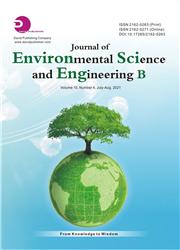Comparative Study on Spatial Forms of Ancient Waterside Towns Based on Google Earth Pro-Taking the Example of Qingmuchuan, Fenghuang and Houliu in Southern Shaanxi, China
引用次数: 3
Abstract
: The purpose of this study is to address the problem of ancient towns dying out in developing countries, particularly China. Intensifying conflicts between human settlements and the natural environment are described, and guidelines are proposed for the development of waterside ancient towns in China’s southern Shaanxi Province in the interest of conserving cultural and natural heritage. The towns of Qingmuchuan, Fenghuang and Houliu were selected as representative examples due to their strong reputation among tourists.They have the characteristics of traditional southern Shaanxi towns, but each has a completely different layout, space and structure. The comparative findings of this research provide a point of reference for establishing guidelines to preserve the integrity of ancient towns worldwide. In this paper, we compare the geographical conditions with the layout and texture of the streets by Google Earth Pro. And we analyze the details of spaces along the river zones, architectural styles and building decorations in order to research the relationship between the natural environment and the human settlement conditions. We note the unfortunate common trend of commercial development steadily taking over the natural environment, particularly the rivers and unique elements of the old towns. Finally, we summarize the similarities and differences of the spatial forms among these towns and put forward proposals for the further development of ancient towns. This research is important for all regions which stand to lose their national treasures. Consequently, measures should be to taken to curtail hyper development before we lose our historicscenery.基于Google Earth Pro的水乡古镇空间形态比较研究——以陕南青木川、凤凰、后流为例
:本研究的目的是解决发展中国家,特别是中国的古镇消亡问题。阐述了人类住区与自然环境之间日益加剧的冲突,并提出了保护文化和自然遗产的陕南水乡古镇发展方针。青木川、凤凰、后流等地因其在游客中的知名度较高而被选为代表。它们具有陕南传统城镇的特点,但每一个城镇都有完全不同的布局、空间和结构。这项研究的比较结果为制定保护全球古镇完整性的指导方针提供了参考。在本文中,我们通过谷歌地球专业版将地理条件与街道的布局和纹理进行了比较。通过对沿江空间、建筑风格、建筑装饰等细节的分析,探讨自然环境与人居条件的关系。我们注意到一个不幸的共同趋势,即商业发展稳步取代了自然环境,特别是河流和古老城镇的独特元素。最后,总结了古镇空间形态的异同,并对古镇的进一步发展提出了建议。这项研究对所有即将失去国宝的地区都很重要。因此,在我们失去历史景观之前,应该采取措施遏制过度发展。
本文章由计算机程序翻译,如有差异,请以英文原文为准。
求助全文
约1分钟内获得全文
求助全文

 求助内容:
求助内容: 应助结果提醒方式:
应助结果提醒方式:


